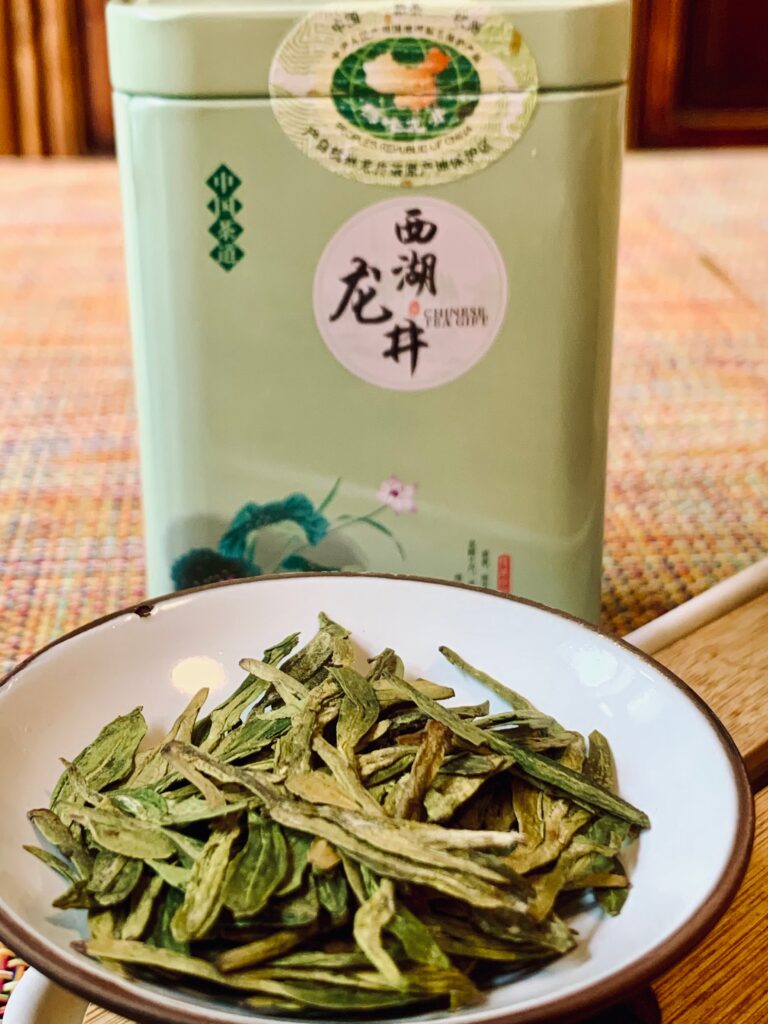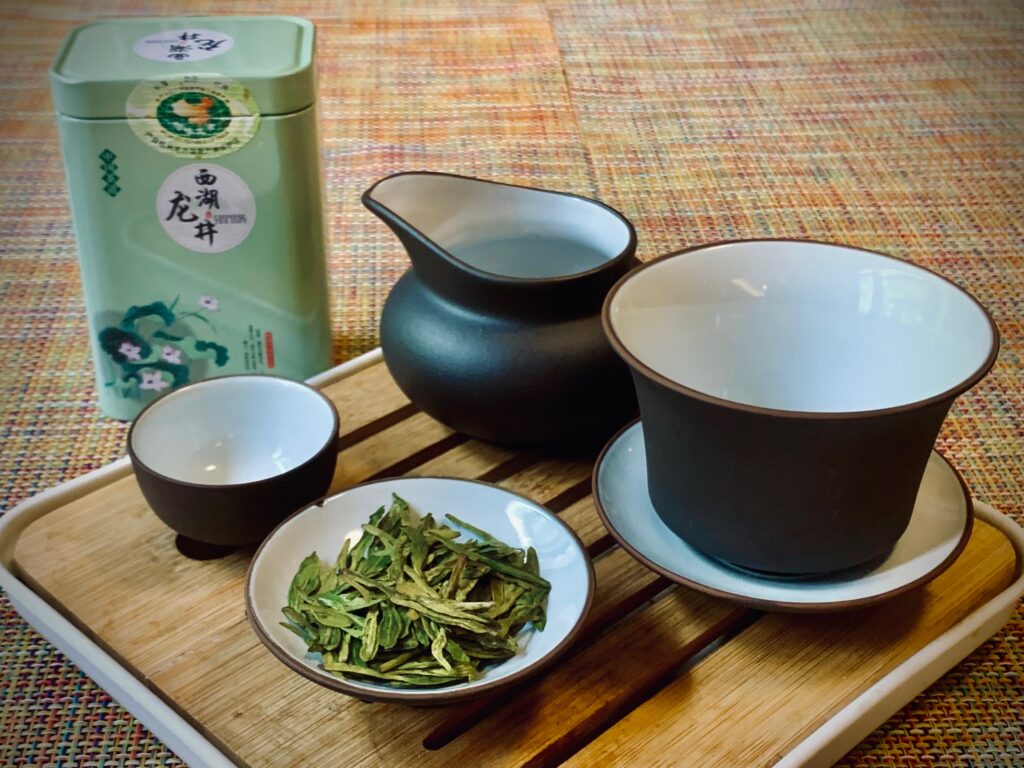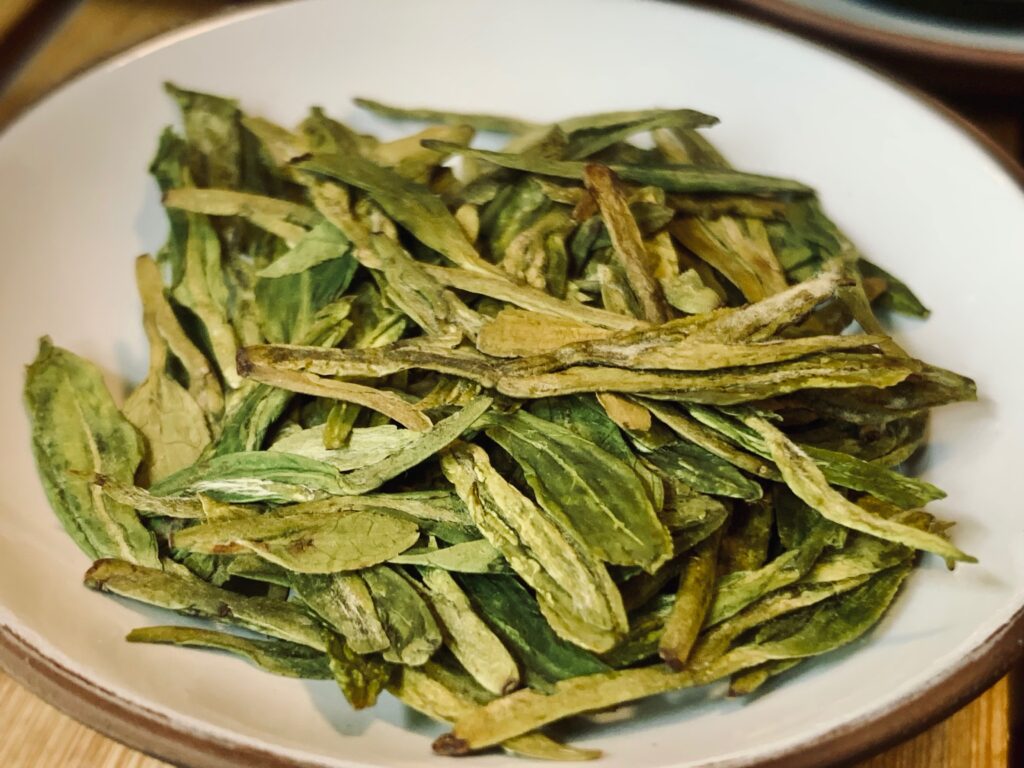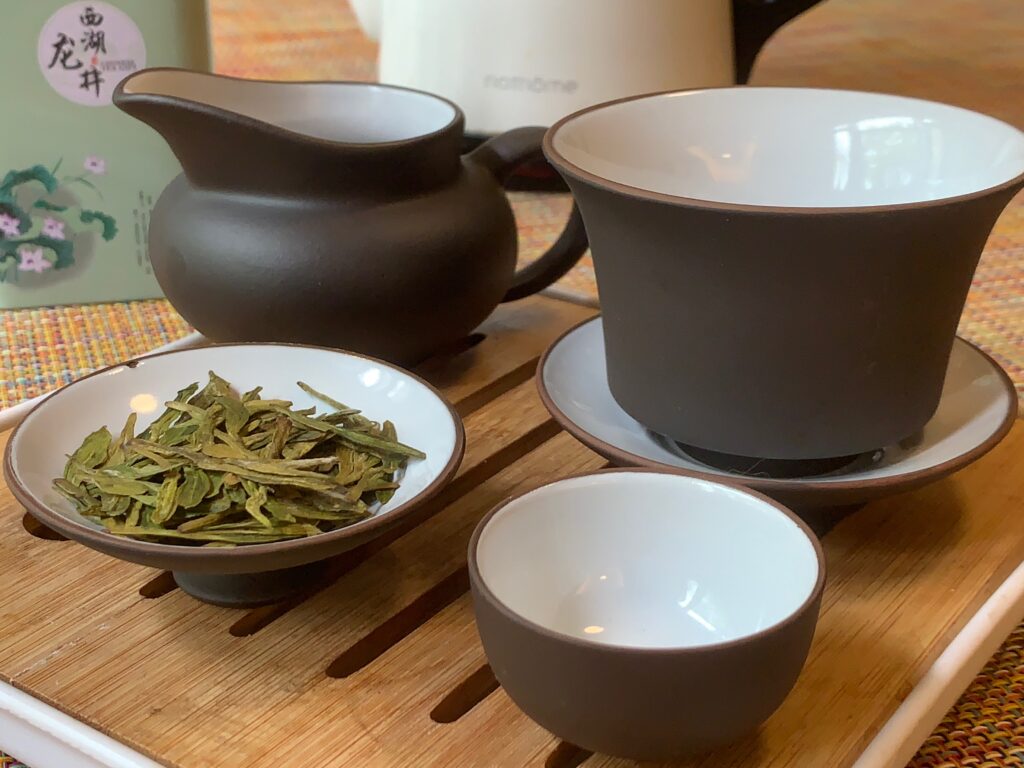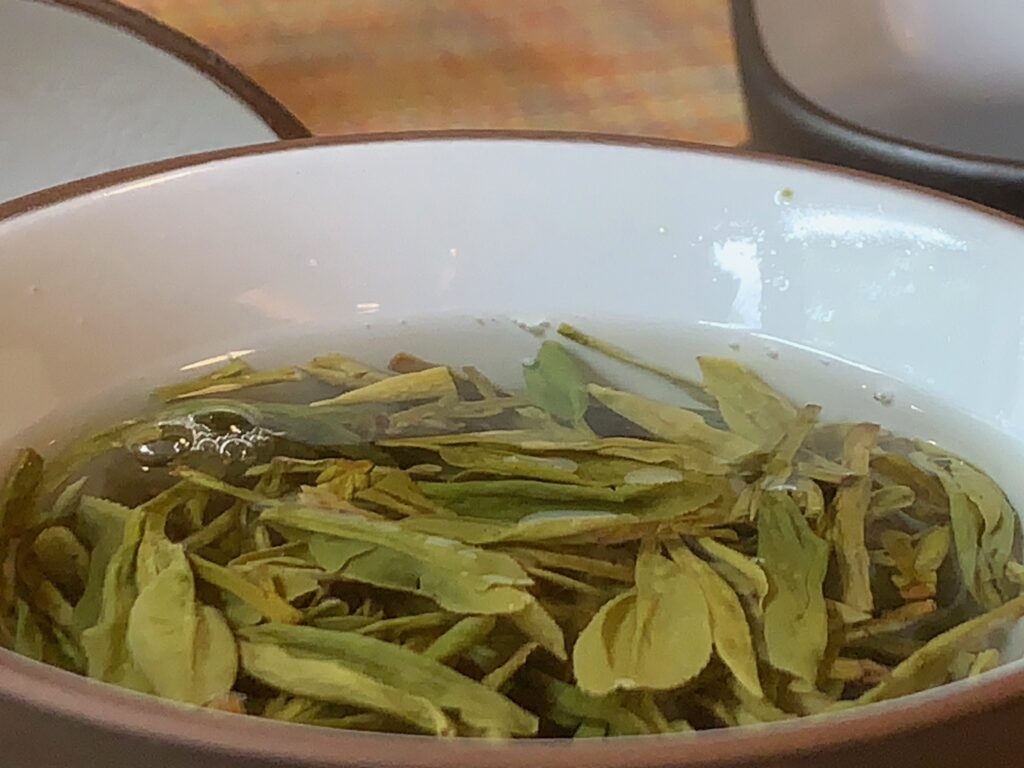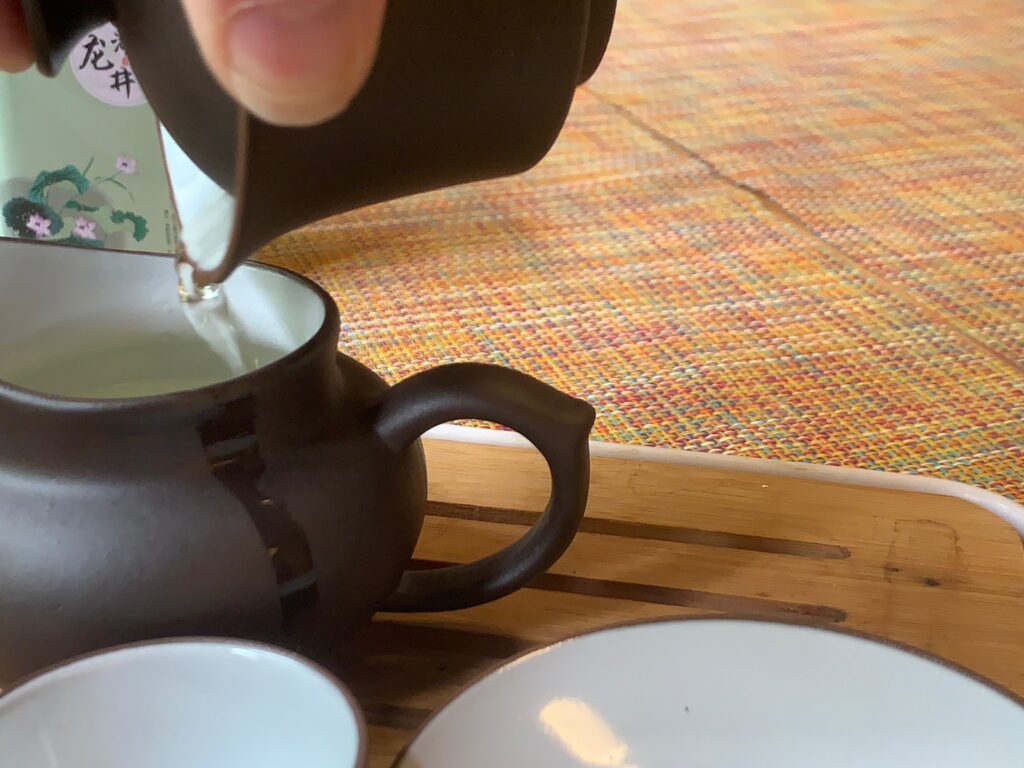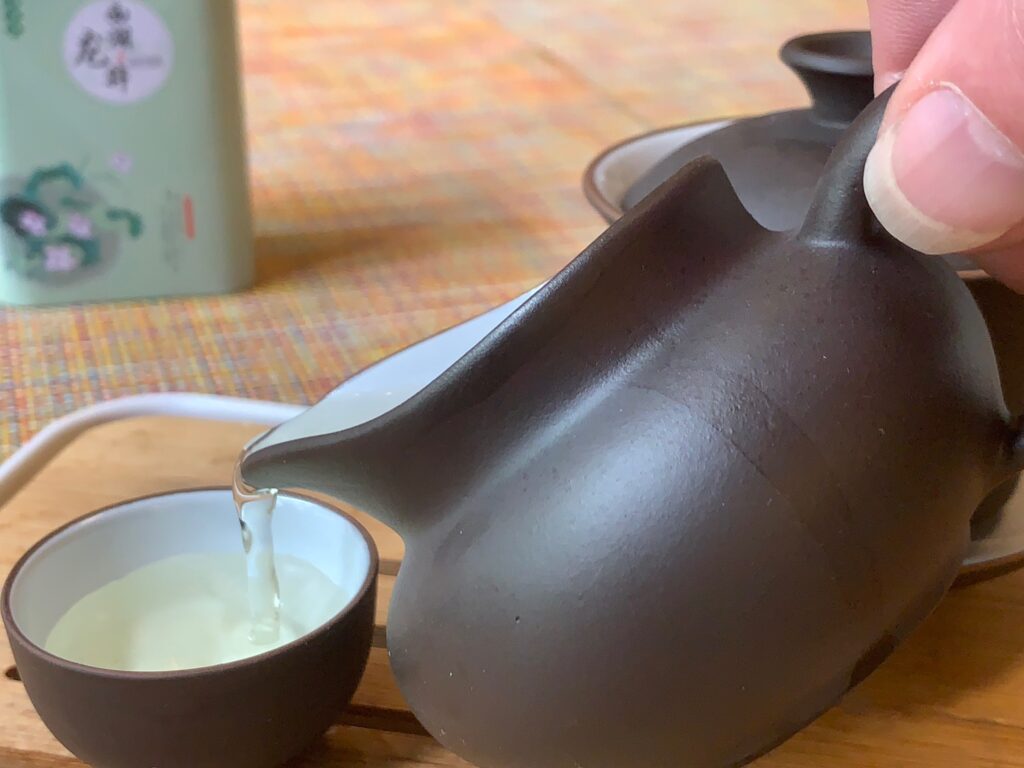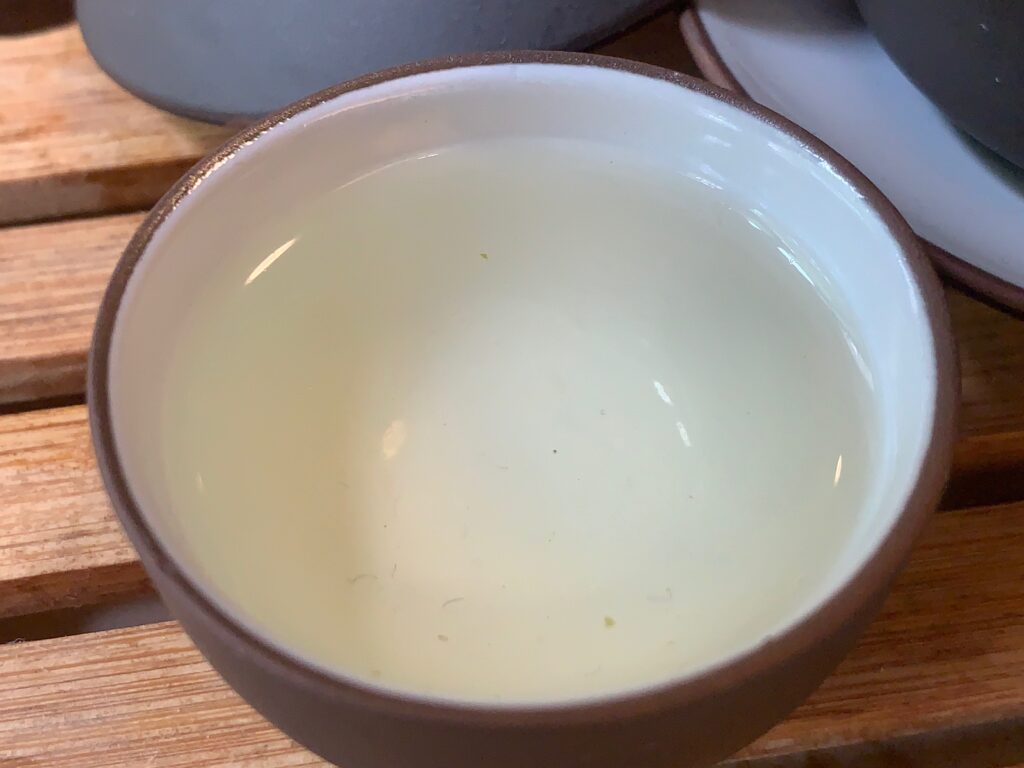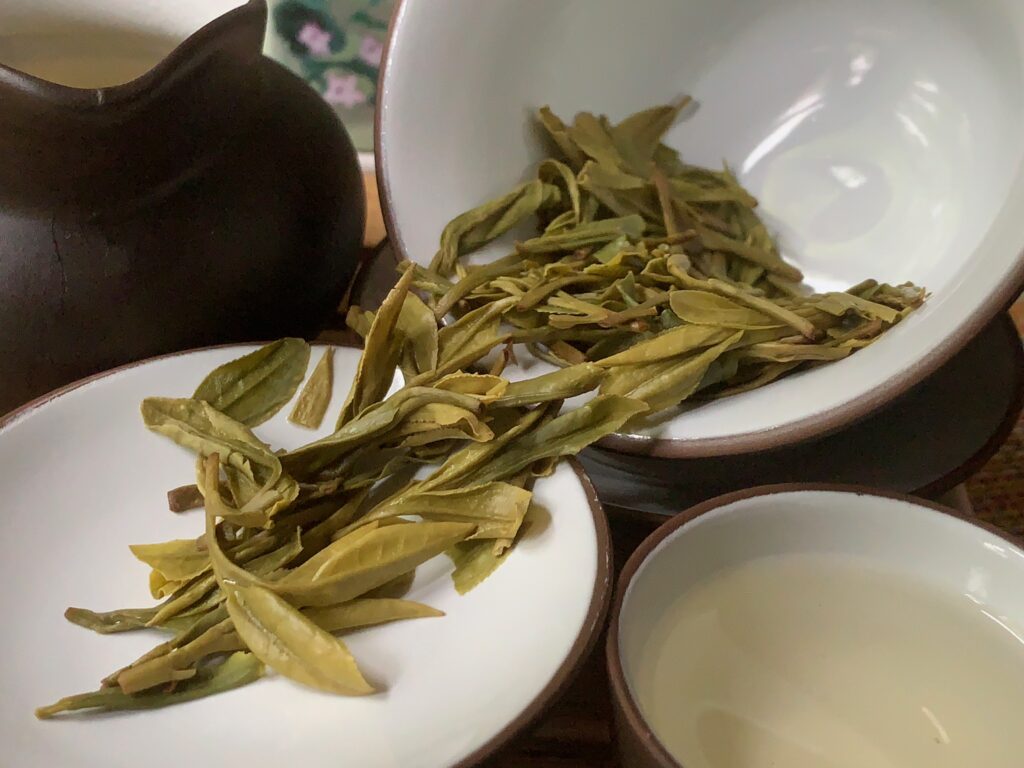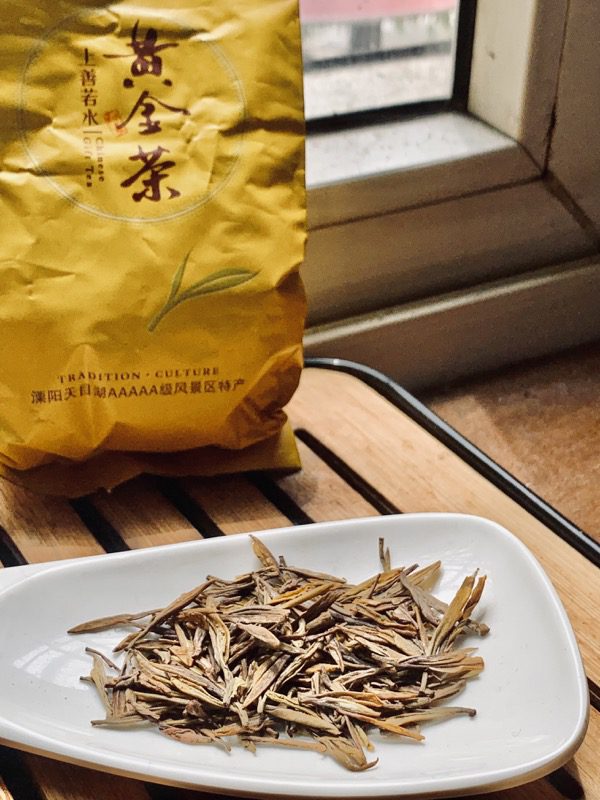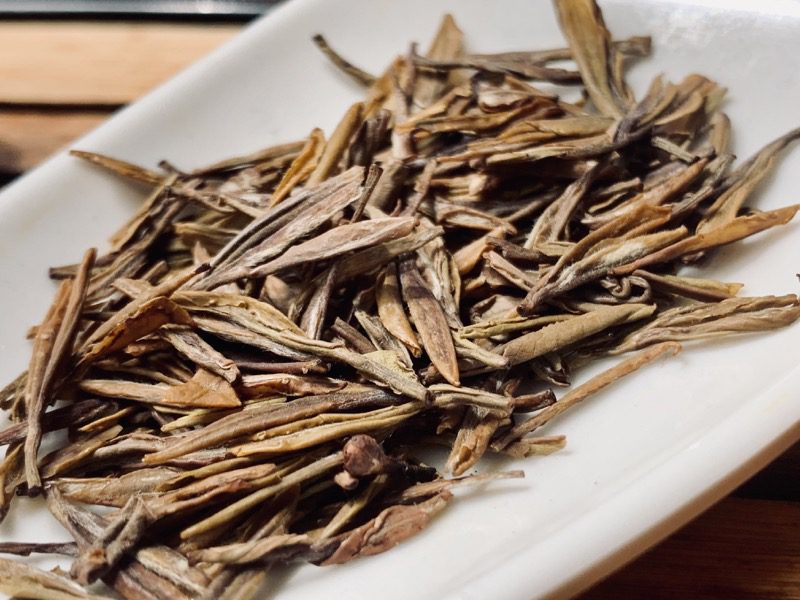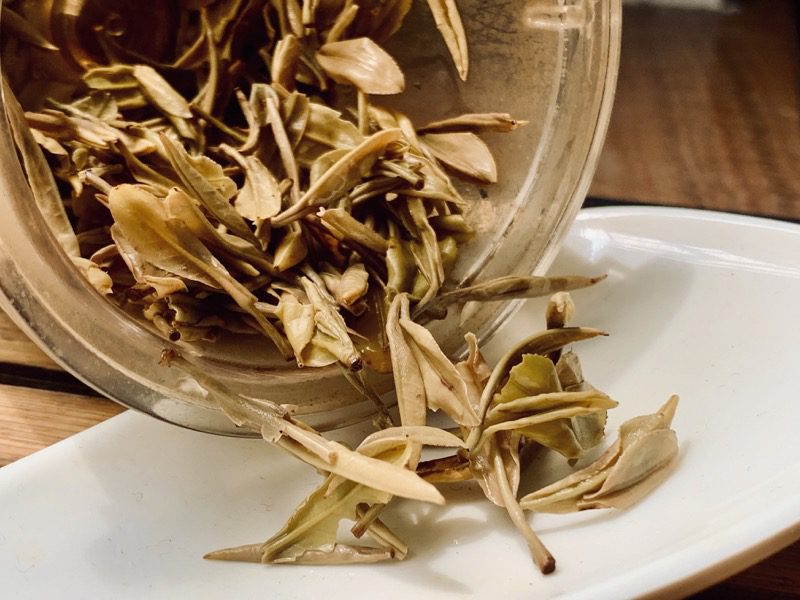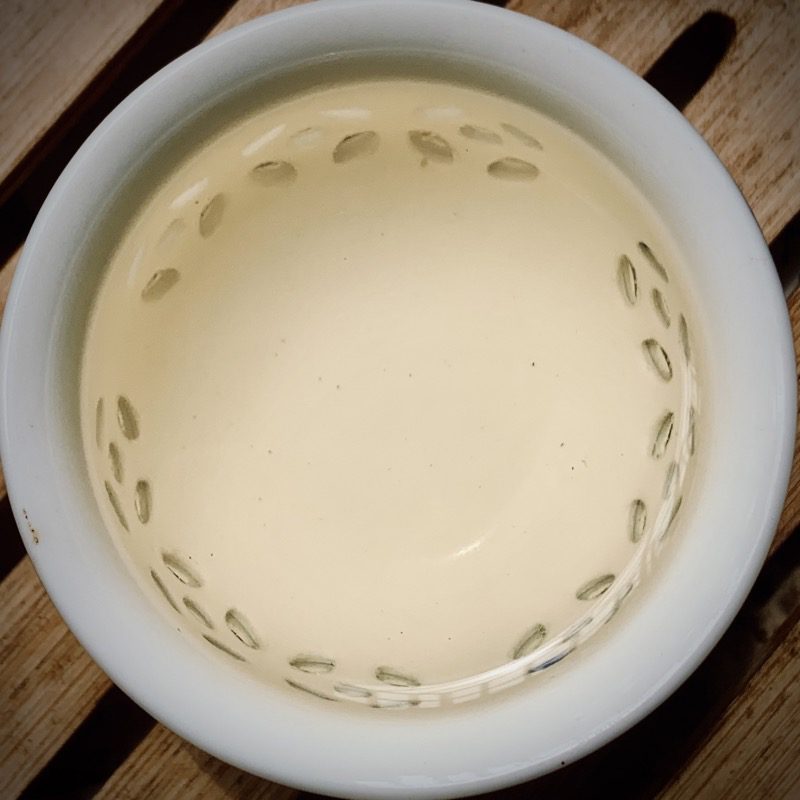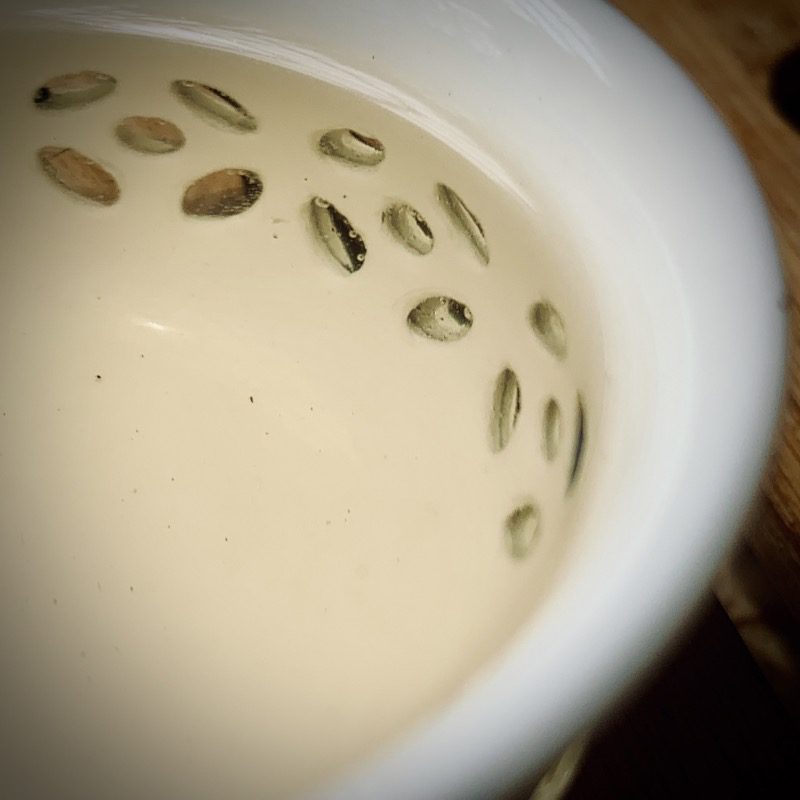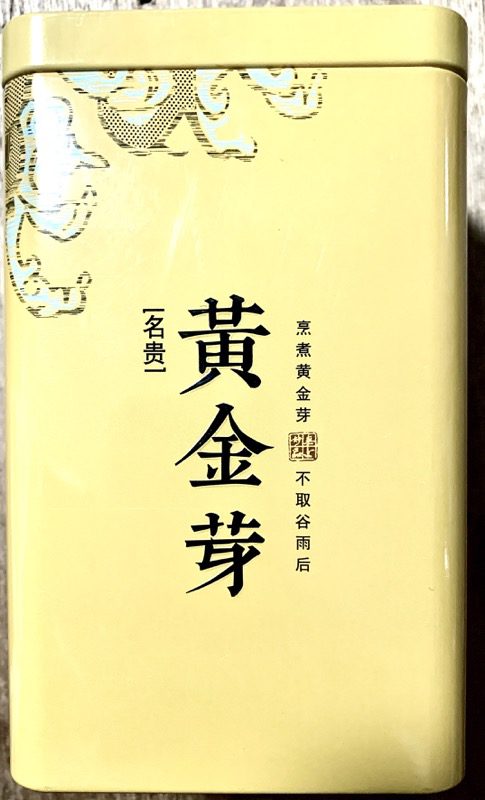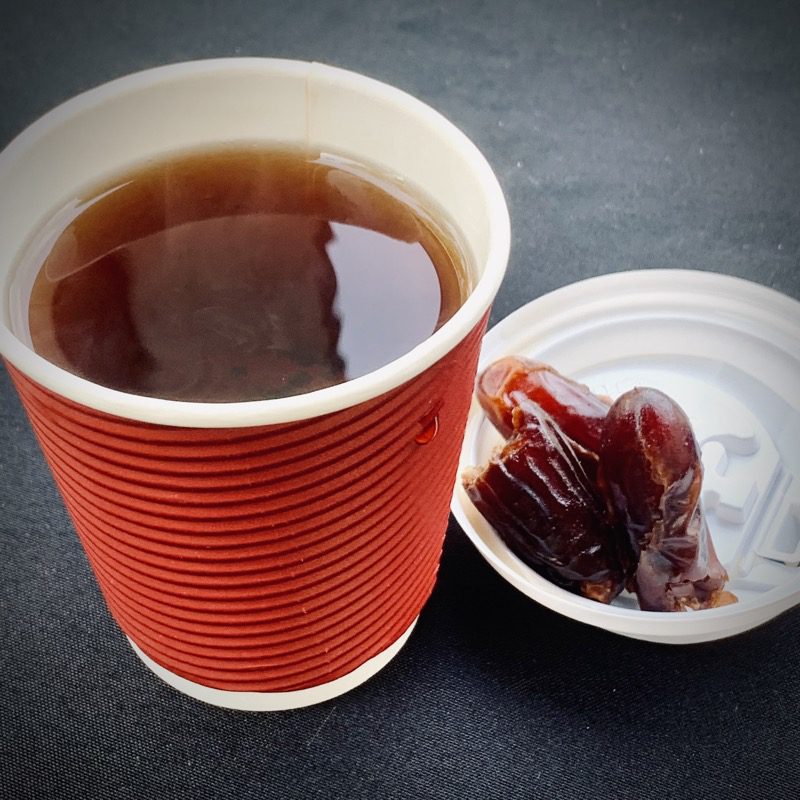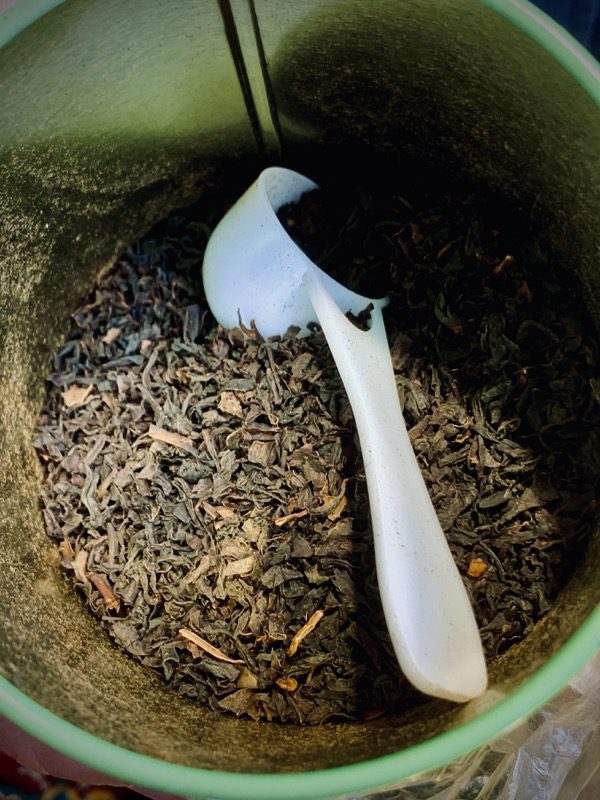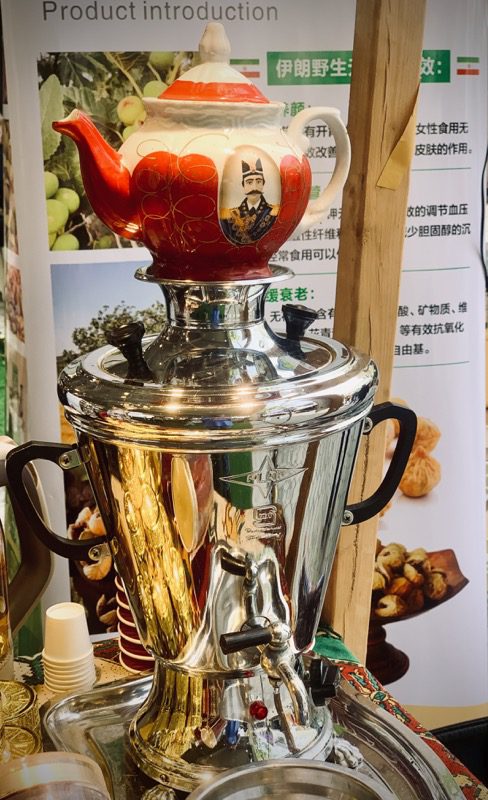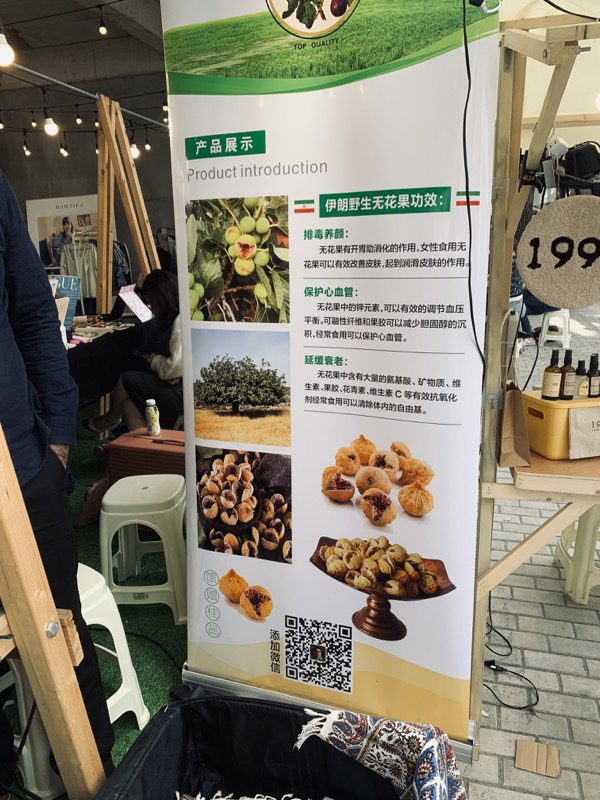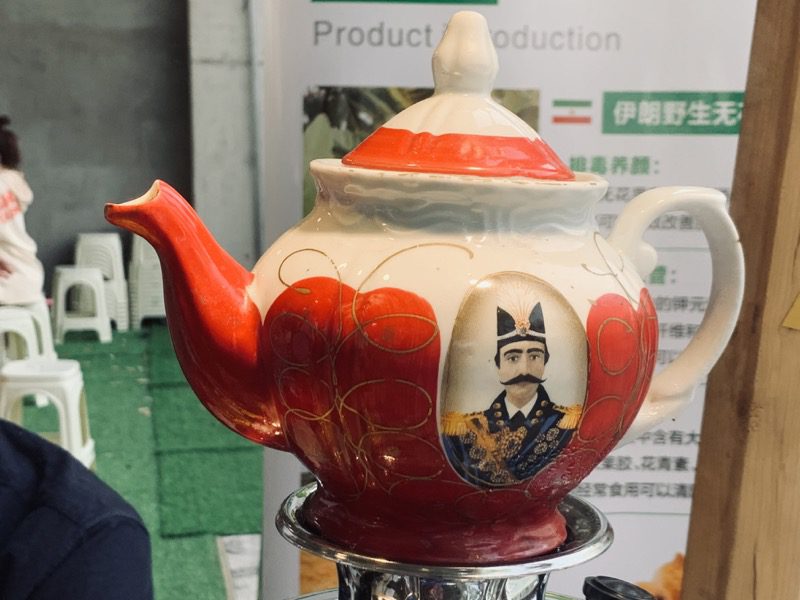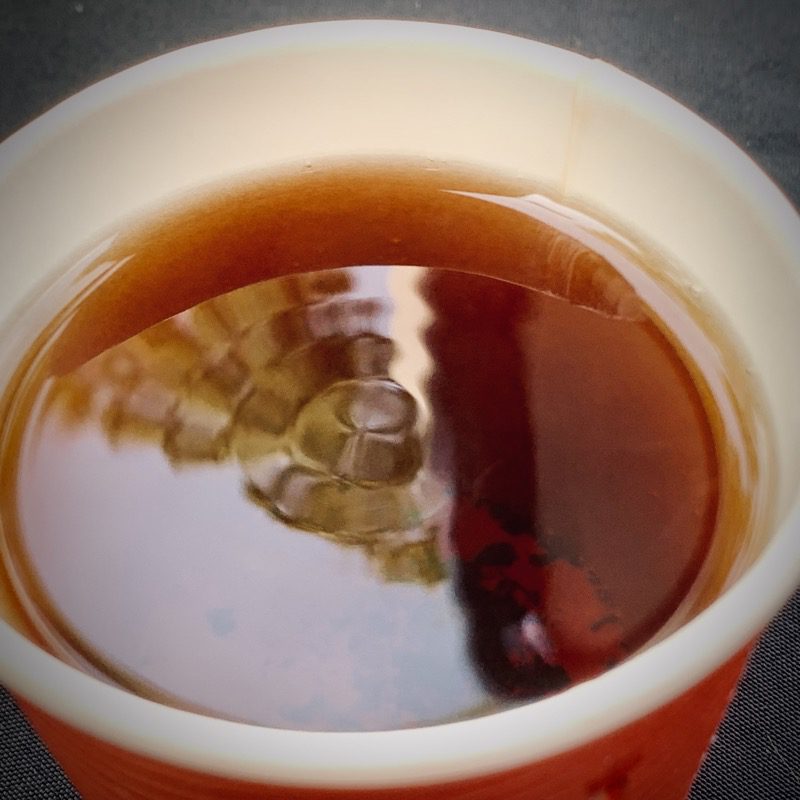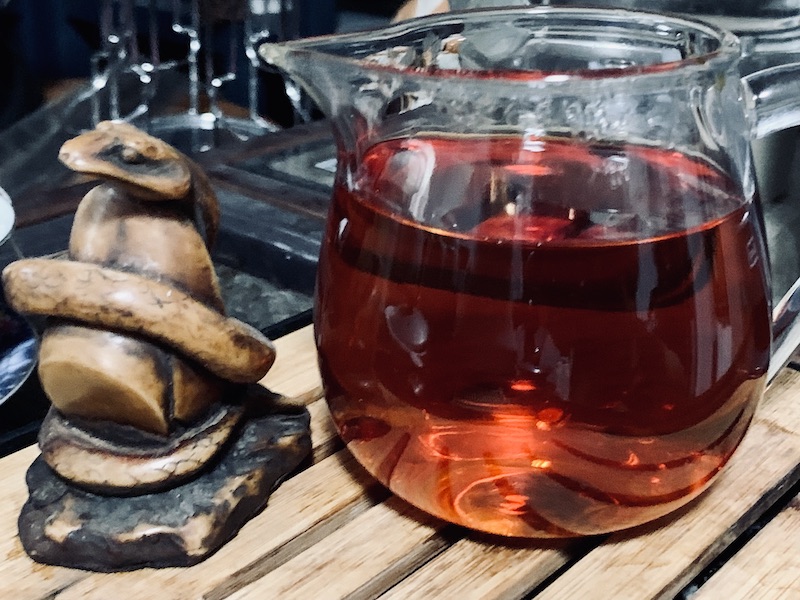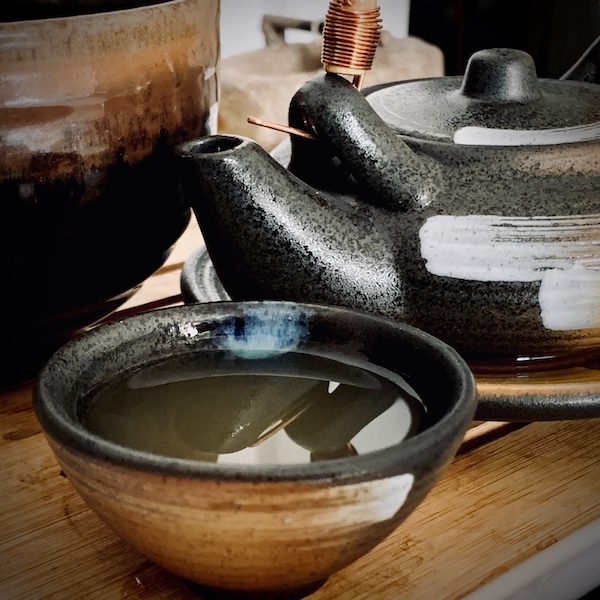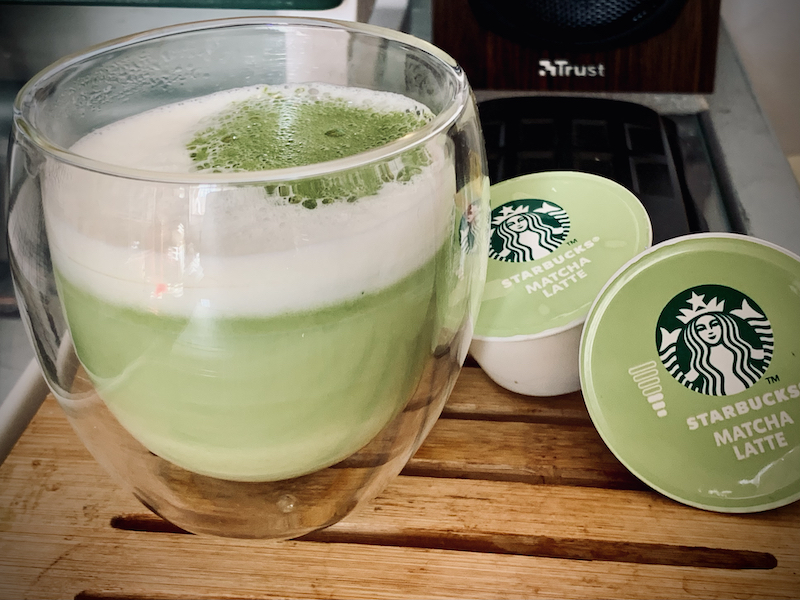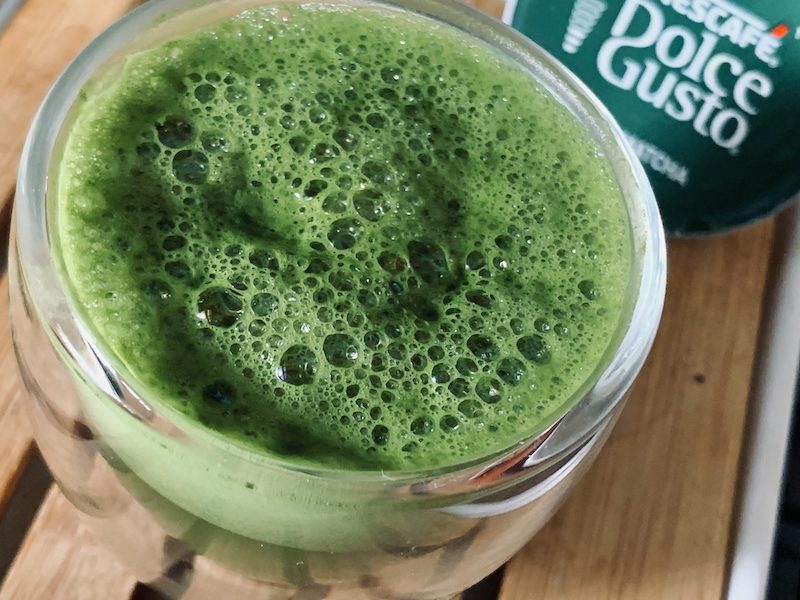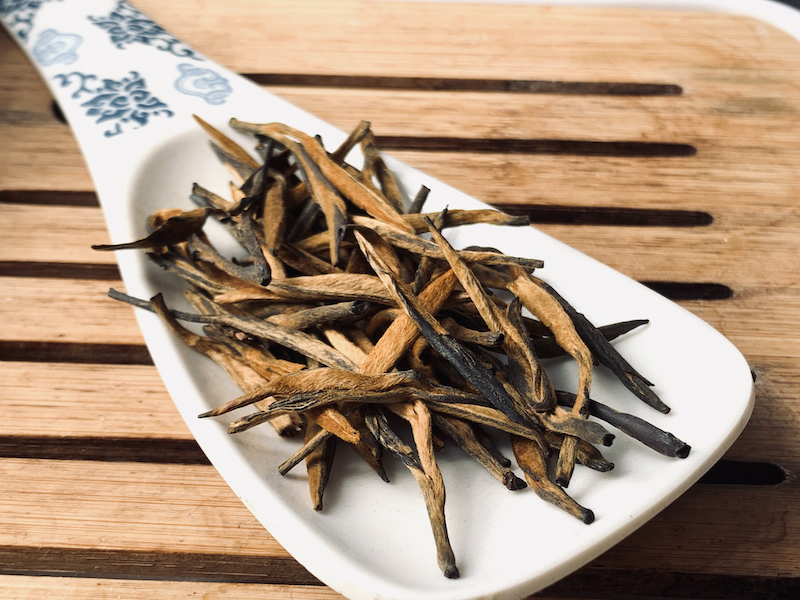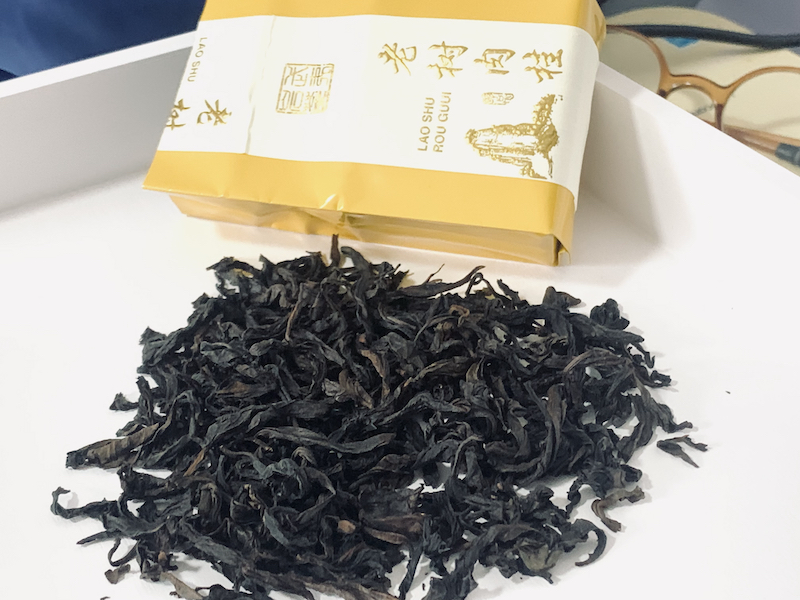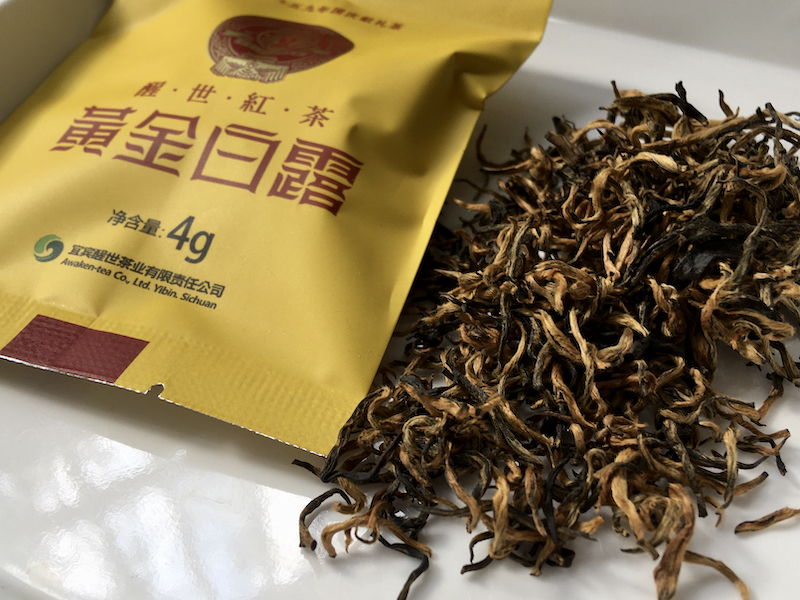Spring 2023; C. sinensis var. Longjing #43; Wenjiashan Village, West Lake, Hangzhou, Zhejiang Province; 330m, bud and one leaf, green tea process; #TodaysTea, #今天的茶, #JīnTiāndeChá, #Tea, #茶, #Chá.
The dry leaves are pale green with a yellow cast, flat and brittle, with a sweet, biscuity, & candy scent, with a hint of sherbet lollies. The wet leaves are mottled yellow to green colour with spongy bounce, and smell of canned green peas, or cooked green vegetables. 3-4g of dried leaf was infused in 150ml of RO water for 30sec. @80°C.
The tea liquor is a very pale yellow colour, buttery and has a slightly vegetal scent. In the mouth it is initially light, and watery, becoming moderately viscous without any cloying stickiness. It is stimulating, mouthwatering, and astringent, followed by a lingering minerality. In general, its taste is fresh, stimulating, creamy and light, peppery and mildly bitter, with a fresh, stimulating, sweet vegetable,and menthol-like finish.
This tea was sourced direct from the tea farm and makers in Wenjiashan, Hangzhou. They told me that there are 3 Longjing varietals, Old Leaf, #47, and #43. #43 is a newer varietal that has been developed to create a softer, milder, sweeter tea experience in the cup.
Over the past few years, I have sampled several versions of Long Jing Tea, including another from the Shi Feng region. Looking back over my tasting notes I am now starting to see, and taste, what might be attributable to, “terror” in the cup. (correction: “terroir…” 😜 )
